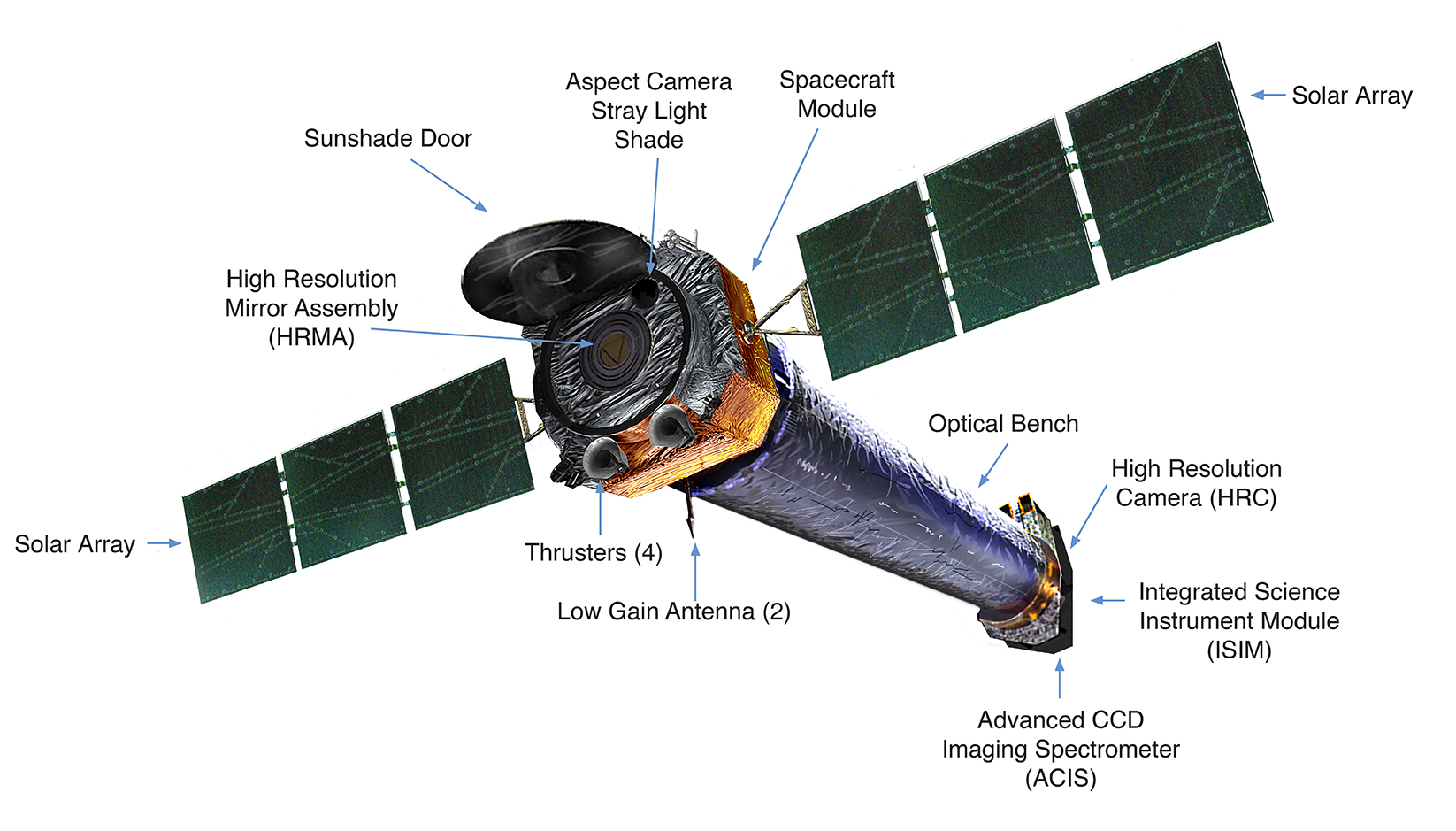Chandra Spacecraft and Instruments
The Chandra telescope system consists of four pairs of mirrors and their support structure. X-ray telescopes must be very different from optical telescopes. Because of their high-energy, X-ray photons penetrate into a mirror much as bullets slam into a wall.
Imagine making the surface of the Earth so smooth that the highest mountain was less than two meters (78 inches) tall! On a much smaller scale, the scientists and engineers at Raytheon Optical Systems in Danbury, Connecticut accomplished an equivalent feat when they polished and ground the four pairs of Chandra mirrors to the smoothness of a few atoms.
Just as bullets ricochet when they hit a wall at a grazing angle, so too will X-rays ricochet off mirrors. The mirrors have to be exquisitely shaped and aligned nearly parallel to incoming X-rays. Thus they look more like glass barrels than the familiar dish shape of optical telescopes.
Science Instruments
The Chandra X-Ray Observatory combines the mirrors with four science instruments to capture and probe the X-rays from astronomical sources. The incoming X-rays are focused by the mirrors to a tiny spot (about half as wide as a human hair) on the focal plane, about 30 feet away. The focal plane science instruments, ACIS and HRC, are well matched to capture the sharp images formed by the mirrors and to provide information about the incoming X-rays: their number, position, energy and time of arrival.
Two additional science instruments provide detailed information about the X-ray energy, the LETG and HETG spectrometers. These are grating arrays which can be flipped into the path of the X-rays just behind the mirrors, where they redirect ( diffract ) the X-rays according to their energy. The X-ray position is measured by HRC or ACIS , so that the exact energy can be determined. The science instruments have complementary capabilities to record and analyze X-ray images of celestial objects and probe their physical conditions with unprecedented accuracy.
Spacecraft
The spacecraft system provides the support structure and environment necessary for the telescope and the science instruments to work as an observatory. In order to provide motion to the observatory, Chandra has two different sets of thrusters: one for propulsion and the other for momentum unloading.
The propulsion thrusters were used immediately after launch to help propel Chandra into its final orbit, which is elliptical and very high in altitude. The momentum unloading thrusters are periodically used to apply torques to Chandra and, thereby, lower the accumulated momentum in its reaction wheels, which are used to control Chandra’s attitude.



























